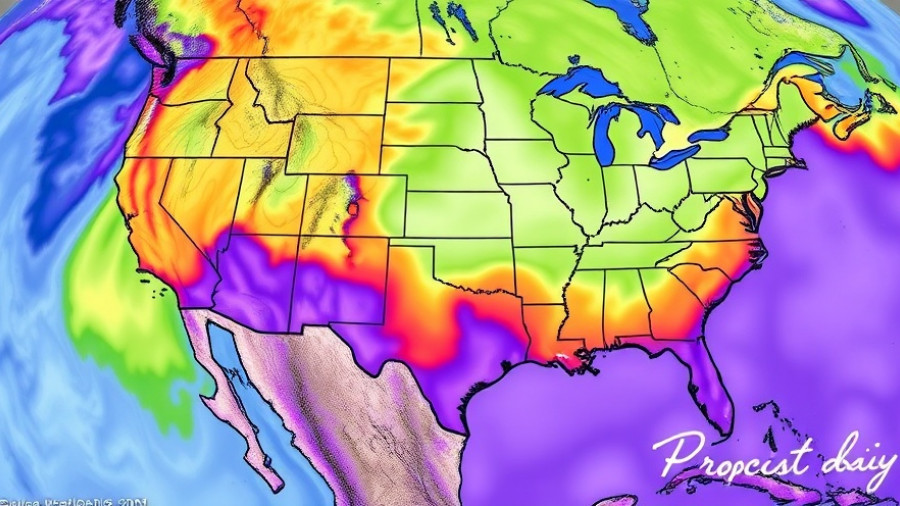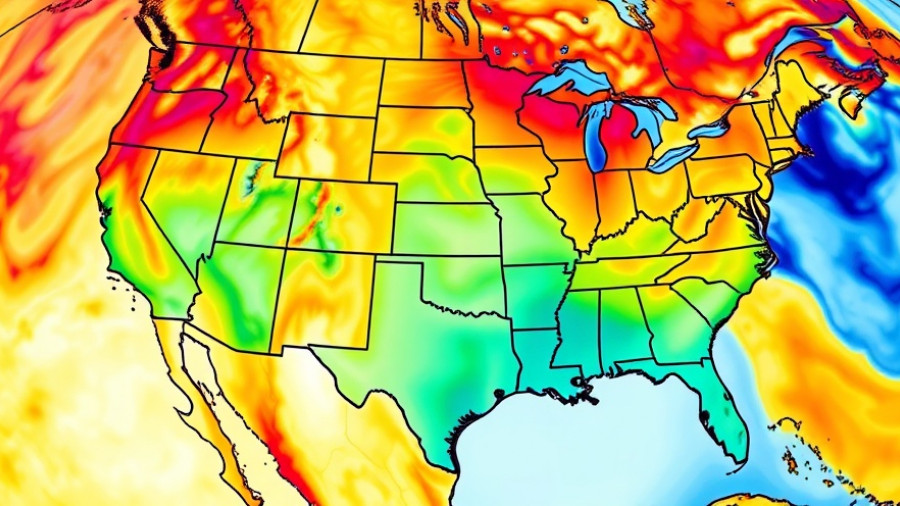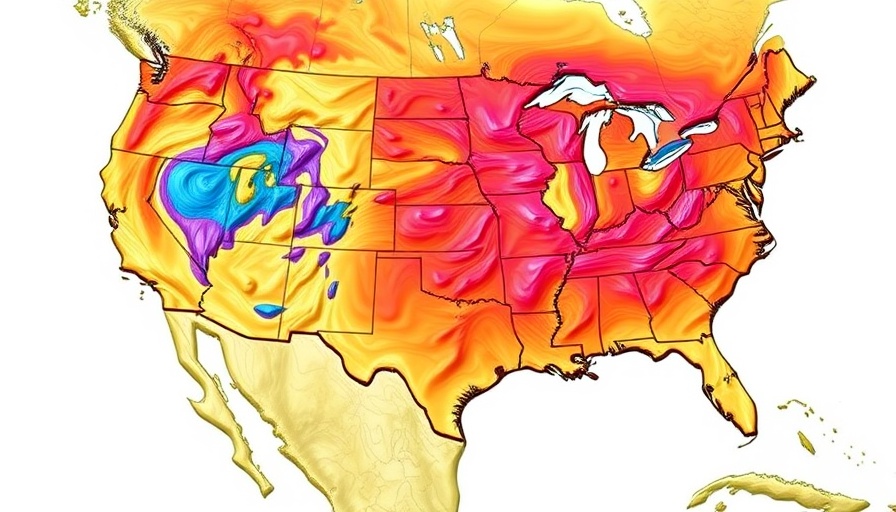
California's Climate Contrasts: An Unusual Late Spring
As California ushers in the summer of 2025, the state is grappling with an unusual weather phenomenon. While the interior and mountainous regions experience remarkable warmth, the coastal areas are facing cooler-than-average conditions. This striking contrast, typically seen only in isolated cases, has become a recurring theme over the past decade, confusing residents and challenging perceptions about California's climate.
Temperature Disparities: A Tale of Two Climates
Recent data from the Western Regional Climate Center illustrates the disparity vividly: most inland areas of California reached temperatures in the upper echelon of historical readings for May, while coastal regions languished in relative coolness. This divergence isn’t just a quirk of nature; it has ecological implications that reverberate throughout the state's diverse environments. For residents along the coast—who generally enjoy stable, milder temperatures thanks to the Pacific Ocean—this year’s chill may feel particularly bewildering when juxtaposed with the intense heat felt just a few miles inland.
The Role of Climate Dynamics and Oceanic Influence
Normal seasonal patterns dictate that the coast remains significantly cooler than areas just beyond the shoreline during summer months, primarily due to stable atmospheric conditions and cold ocean influence. However, this year has seen an intensification of the cooler coastal environment while warming rapidly inland. This stark dichotomy raises questions about shifting climate patterns and their potential outcomes as warmer temperatures become a norm in California’s interior.
Fire Risk: A Looming Threat
With the significant warming of inland regions, California faces an impending challenge: wildfire risk. Vegetation in many of the state's wilderness areas has dried out earlier than usual, setting the stage for a severe fire season as the warmer months approach. The early melt of high-elevation snowpacks and reduced moisture content in plants have heightened the concern among fire officials, who warn that conditions from August through October could be particularly perilous.
Adapting to an Evolving Climate
California residents need to adapt to these extremes, which may include preparing for even more extreme weather conditions in the years to come. Understanding the implications of these changing patterns is essential for individuals living in fire-prone areas. Communities may consider proactive preparedness strategies, including defensible space around homes, fire-resistant landscaping, and participation in local fire management programs.
Looking Ahead: The Future of California's Climate
As the summer progresses, experts anticipate more anomalous heat across the state. The dual narrative of a chillier coast facing record heat inland not only reflects the current state of California’s climate but also serves as a precursor to the greater climatic challenges ahead. Recognizing these trends is crucial for anyone living in or planning to visit California, particularly in understanding how weather influences life, agriculture, and outdoor activities.
This mid-summer dynamic serves as a critical reminder that California's environment is always in flux, and collective awareness can empower communities to better prepare for future climatic conditions. In an era of unpredictable weather, staying informed is our best tool for adaptation.
 Add Row
Add Row  Add
Add 




Write A Comment